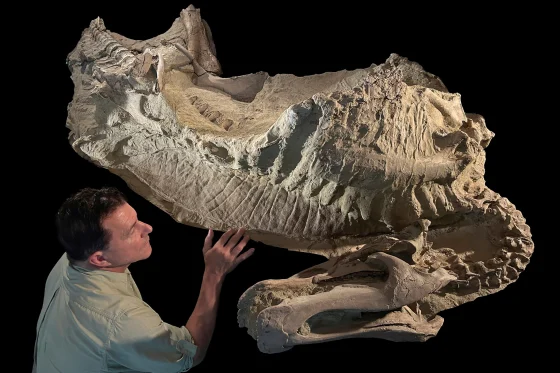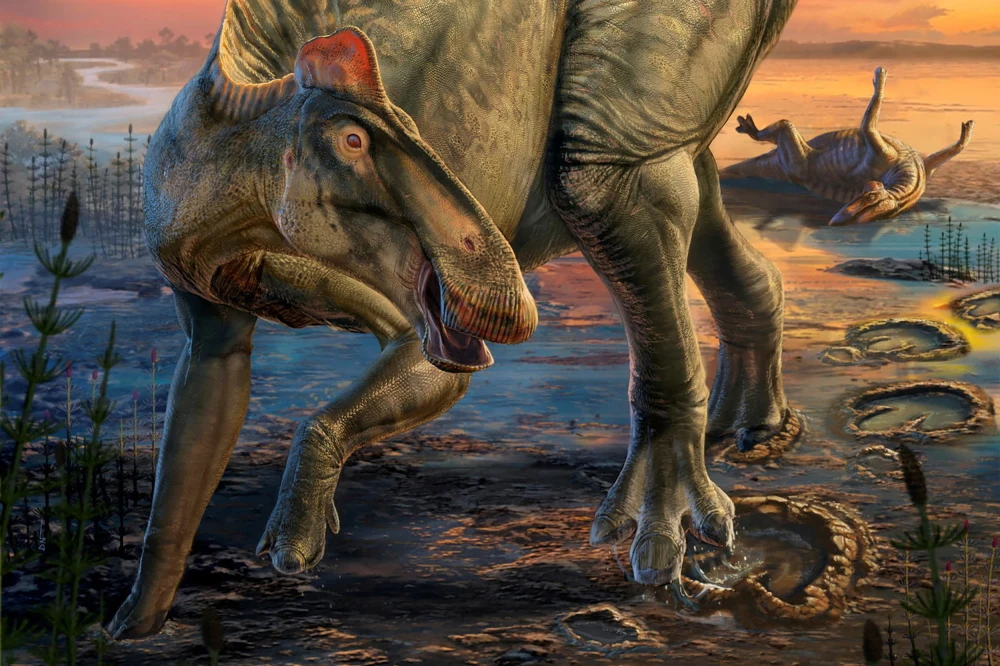In the rugged badlands of Wyoming, scientists have unearthed two exceptionally preserved fossils of the duck-billed dinosaur Edmontosaurus, offering an unprecedented glimpse into the creature’s soft tissue and skin — and revealing a stunning surprise: this massive plant-eater had hooves.
The discovery, led by University of Chicago paleontologist Paul Sereno and published in Science, includes a young adult about 40 feet (12 meters) long and a juvenile roughly half that size. These fossils, encased in a delicate clay layer just one-hundredth of an inch thick, captured the outer contours of the dinosaurs’ skin and flesh with extraordinary precision — a level of preservation rarely seen in paleontology.
“We’re seeing the full profile of the dinosaur for the first time,” Sereno said. “We’re confident what it looked like.”
Although described as “mummies,” the fossils contain no organic tissue or DNA — only a natural clay cast of the dinosaurs’ bodies. The term, originally coined for similar finds over a century ago in the same region, refers to the lifelike external preservation rather than true mummification.
Edmontosaurus lived around 66 million years ago, near the end of the Cretaceous Period, sharing its ecosystem with Tyrannosaurus rex, Triceratops, and Ankylosaurus. Known for its broad, duck-like snout, Edmontosaurus was one of the most abundant herbivores in prehistoric North America — “the cow of its day,” Sereno said.

But the revelation that Edmontosaurus had true hooves — the first ever discovered in any dinosaur, reptile, or early land vertebrate — has startled scientists. These structures likely evolved to help the animal move efficiently across firm ground, much like modern ungulates such as horses and cows.
“It’s for hard land, efficiently walking — maybe even running — over the surface,” Sereno explained.
This adaptation represents a classic case of convergent evolution, where unrelated species independently develop similar traits — much like wings in birds, bats, and pterosaurs.
The fossils also revealed intricate details of the dinosaur’s outer form: a fleshy midline crest running along the neck and back, transforming into a single row of spikes down the tail, and a surface covered in small, lizard-like scales.
Researchers believe both individuals likely perished during a drought, their dried carcasses later entombed in a thin film of clay from a sudden flood — a preservation process called clay templating.
While excavating the same “mummy zone,” Sereno’s team also unearthed fossils of T. rex and Triceratops, which will be described in upcoming studies. Remarkably, Sereno noted, the Tyrannosaurus specimen shows signs it may have been feathered.
“The T. rex doesn’t even have scales,” he said.
Together, these discoveries are transforming scientists’ understanding of what dinosaurs looked like — and how they lived — in the final days before their extinction.
